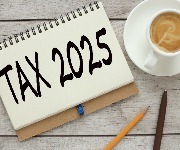Fury as commuters face train fare rises of up to 11.2%
Some commuters face train fare price rises of more than three times inflation next year. And they aren't happy.
Thousands of us rely on trains to get to work every day. But this already expensive form of travel is about to get even more costly, with fare increases from next year of almost double the rate of inflation.
The increase, which will come into effect in January, is linked to July's Retail Prices Index. In England, train networks can increase their prices by RPI plus three percentage points. And after this week’s announcement that RPI has risen to 3.2%, that means the average rise will be a whopping 6.2%.
In Scotland and Wales, train firms are allowed to charge 1% above RPI.
What’s more, that’s just the average. Some price rises could top 11.2% on selected routes thanks to a system called ‘flex’. This agreement allows rail companies to push up some fares by 5% more as long as they make cuts elsewhere.
For some commuters, already overstretched, this could add hundreds of pounds to their travel costs.
The increases will affect regulated fares, season tickets, commuter, saver and a few inter-city services.
For example, commuters travelling with a Reading to London season ticket currently pay £3,800. But with the planned rises this figure could shoot up to over £4,000.
Those travelling from Stowmarket in Sussex to London already pay a hefty £5,712 for their yearly ticket, but could face a rise of £354.14, bringing the total cost in January to over £6,000.
|
Commuter town |
Current season ticket price to London |
Predicted price rise at 6.2% |
Predicted season ticket price January 2013 |
|
Brighton |
£3,392 |
£210.30 |
£3,602.30 |
|
Luton |
£3,604 |
£223.45 |
£3,827.45 |
|
Reading |
£3,800 |
£235.60 |
£4,035.60 |
|
Oxford |
£4,348 |
£269.58 |
£4,617.58 |
|
Bedford |
£4,004 |
£248.25 |
£4,252.25 |
|
Stowmarket |
£5,712 |
£354.14 |
£6,066.14 |
Since 2004, the year-on-year price rises in train fares have all been above inflation. The problem is this doesn’t seem to be buying commuters a better service. So do you think your rail journey is good value for money?
If you're anything like the commuters I spoke to, chances are you don't. One said: "The prices go up all the time, but nothing ever changes. The trains I use are all old trains." Another said he was thinking of moving home for the sake of a cheaper commute.
The imminent price rises will make our rail journeys some of the most expensive in Europe and the cost is likely to make a big impact on our already overstretched budgets.
The Government has performed U-turns on a number of policies already this year. Let’s hope that the planned rail fare rises will also be reconsidered by the Government to save commuters from the misery of paying even more for a service they‘re not entirely satisfied with.
More on travel:
How to claim a refund on your train tickets
The UK's worst train operator
Used car prices fall
2012's most reliable cars
Most Recent
Comments
-
When I was a kid there used to be cheap excursions to make the rail networks more economic. It was quite a day out to take a train journey. Now they have electrification, radios and all sorts of gizmos and when I went to a railways station a couple of months ago, all the trains were cancelled. They are only three empty coaches when I do see one. They used to be that full, there would be people standing. It's a little like the High Streets, pedestrianised, with kerbs sticking out into the road and no parking anywhere. They wonder why there are no shoppers... I understand they are queuing up for tickets to the Orient Express...
REPORT This comment has been reported. -
I have little sympathy. A major cost here is rolling stock. Had it not been for the mad panic over safety in the period after the Clapham rail accident, the mark 1 slam door stock would still be in service. This would have considerably reduced the costs of the whole operation. It was good for about 45 years from 1975 ie in the normal way of things the last of it would have been withdrawn in 2020. As it was, the last of the stock was taken out of service in 2005, which means that 15 years of service life was lost - nearly one-third of the total. There were a variety of enhancements that could have been made to this stock at minimum cost to bring them up to modern standards, plus the option of re-bodying but retaining the most expensive and valuable components ie bogies and other running gear and the electrical equipment which was simple and robust and could have been made to last indefinitely. The new stock, being heavier, also consumes more electricity which has to be paid for. One of the reasons why the less expensive option was not chosen was because the oligolopoly of train manufacturers was anxious to sell their very expensive new products and convinced the politicians who make these decisions that trains are like cars and have a fifteen year replacement cycle. Things are going to get much worse. The real cost of railway rolling stock went up by a factor of about 6 between 1955 and 1995 and has risen again with the advent of trains like the Pendolino, the Crossrail replacement and the Hitachi Inter City Express which has just been ordered. The latter costs about £2.9 million per vehicle compared with £6000 per vehicle in 1955. Allowing for a factor of 40 for inflation, that makes the new trains ten times as expensive in real terms. They are not ten times more comfortable, or ten times faster or ten times safer. Passengers travelling in 1950s trains normally remark how spacious and comfortable they are in comparison with the new ones.
REPORT This comment has been reported. -
The above inflation, sorry, inflationery fare increases (Maggie Thatcher was right on that one) are supposed to provide money for the railway companies to invest in improving the service. Any company will have an investment plan that shows how much it needs in order to make planned investment. Here we have a random amount being paid to the railway companies based on the rate of inflation on a randomly chosen date. There is no business plan and no investment plan. Railway companies should be required to publish costed investment plans each year showing improvements and investments and should be publicly accountable for their delivery. The rule should be "no plan, no fare increase", "failed plan, reconsideration of contract and no increase next year", "plan too expensive, Government veto".
REPORT This comment has been reported.
Do you want to comment on this article? You need to be signed in for this feature









05 September 2012